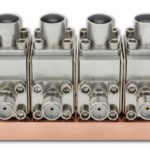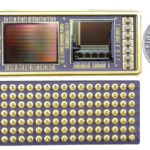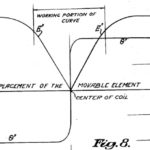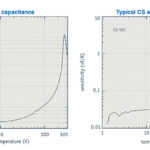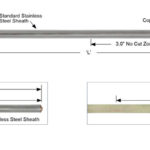This FAQ series has gone to extremes and looked at “electronics that operate in extreme heat” (up to 800°C) and “electronics that operate in extreme cold” at cryogenic temperatures. This third and final FAQ will consider the various methods available to create artificial cryogenic environments.
The temperature where refrigerated temperatures end and cryogenic temperatures begin is not universally defined. The U.S. National Institute of Standards and Technology considers cryogenic temperatures to be below −180°C (93K; −292°F). That temperature was selected because the normal boiling points of gases such as helium, hydrogen, neon, nitrogen, oxygen, and normal air, lie below −180°C. Simultaneously, Freon, hydrocarbons, and other common refrigerants have boiling points above −180°C.
In addition, there is often a distinction made between high-temperature cryogenics and low-temperature cryogenics. Liquid nitrogen with a boiling point of 77.09K is considered “high-temperature cryogenics” (as in “high-temperature superconductivity”). The use of liquid helium with a boiling point of 4.214K (3.19K for helium-3) is considered low-temperature cryogenics. It is often associated with noise-sensitive uses such as quantum computers, superconducting quantum interference devices (SQUIDs), nuclear magnetic resonance spectroscopy, magnetic resonance imaging, microwave preamplification, and so on.
Direct liquid cooling
There are several ways to produce a cryogenic environment; direct liquid cooling, the use of a cryocooler or cryogenic refrigerator, and various techniques that directly manipulate individual atoms to effect cooling. Liquefied gases, such as liquid nitrogen and liquid helium, are used directly in many cryogenic applications. Liquid nitrogen is the most commonly used and least expensive element used in cryogenics. Liquid helium is also commonly used. It is more expensive and difficult to handle than liquid nitrogen but allows for the lowest attainable temperatures to be reached.

For example, liquid nitrogen is used in superconducting power cables, for CCD cameras in astronomy, and to maintain a low temperature around the primary liquid helium cooling system of high-field superconducting magnets used in nuclear magnetic resonance spectrometers and magnetic resonance imaging systems.
These liquids may be stored in Dewar flasks, which are double-walled containers with a high vacuum between the walls to reduce heat transfer into the liquid. Typical laboratory Dewar flasks are spherical, made of glass, and protected in a metal outer container. Dewar flasks for extremely cold liquids such as liquid helium are inside another double-walled container filled with liquid nitrogen.
Cryocoolers and cryogenic refrigerators
A cryocooler is a specialized refrigerator designed to reach cryogenic temperatures. Cryocoolers tend to be smaller systems, typically up to about 20kW, but can be as small as 2W. Typical applications for cryocoolers include high-temperature superconductivity (HTS) filters, high altitude balloons, refrigeration, germanium detectors, IR detectors, radio telescopes, laser diode cooling, and general research, among others. Large systems, for example, MW-sized systems used to cool the superconducting magnets in particle accelerators, are generally referred to as cryogenic refrigerators.

Cryocoolers use a cryogenic fluid as the working substance and employ moving parts to cycle the fluid around a thermodynamic cycle. The fluid is typically compressed at room temperature (300K), precooled in a heat exchanger, then expanded at some low temperature. The returning low-pressure fluid passes through the heat exchanger to precool the high-pressure fluid before entering the compressor intake. The cycle is then repeated. There are several physical embodiments of cryocoolers, but the general theory of operation is the same. Usually, helium is the working fluid, which can produce a temperature of about 4.2K, reducing almost 100:1 versus room temperature.
Laser, evaporative, RF, and magnetic cooling
Laser cooling includes a number of techniques in which atomic and molecular samples are cooled down to near absolute zero. Laser cooling techniques rely on the fact that when an atom absorbs and re-emits a photon of light, its momentum changes. The first example of laser cooling and still the most common method (so much so that it is still often referred to simply as ‘laser cooling’) is Doppler cooling. Doppler cooling involves light with frequency tuned slightly below an electronic transition in an atom. Because the light is detuned to the “red” (i.e., at a lower frequency) of the transition, the atoms will absorb more photons if they move towards the light source due to the Doppler effect. An atom moving towards the laser sees it blue-shifted and absorbs the photon, slowing the atom. Slowing atoms reduces the temperature.
Evaporative cooling is an atomic physics technique to achieve high phase-space densities, which typically cannot reach optical cooling techniques. Atoms trapped in optical or magnetic traps are cooled as the trap depth is decreased, and the hottest atoms (with the highest kinetic energy) leave the trap. The hot atoms leaving the trap are on the tail of the Maxwell-Boltzmann distribution (which defines the particle speeds, and thereby the particle energies, in gas). Therefore, they carry away a significant amount of kinetic energy, mitigating the loss of atoms by an overall increase in phase space density.
Often RF energy is used to drive the hottest atoms from the trap. The RF radiation is commonly referred to as an RF knife because it cuts the hottest atoms out of the trap.
Magnetic refrigeration is a cooling technology based on the magnetocaloric effect. This technique can be used to attain extremely low temperatures and the ranges used in common refrigerators. The first working magnetic refrigerators were constructed by several groups beginning in 1933. Magnetic refrigeration was the first method developed for cooling below about 0.3K.
The magnetocaloric effect is a magneto-thermodynamic phenomenon in which a temperature change of a suitable material is caused by exposing the material to a changing magnetic field. Low-temperature physicists also know this as adiabatic demagnetization. In that part of the refrigeration process, a decrease in the strength of an externally applied magnetic field allows the magnetic domains of a magnetocaloric material to become disoriented from the magnetic field by the agitating action of the thermal energy (phonons) present in the material.
If the material is isolated so that no energy is allowed to (re)migrate into the material during this time (i.e., an adiabatic process), the temperature drops as the domains absorb the thermal energy to perform their reorientation. The randomization of the domains occurs in a similar fashion to the randomization at the curie temperature of a ferromagnetic material, except that magnetic dipoles overcome a decreasing external magnetic field. At the same time, energy remains constant, instead of magnetic domains being disrupted from internal ferromagnetism as energy is added.

One of the most notable examples of the magnetocaloric effect is in the chemical element gadolinium and some of its alloys. Gadolinium’s temperature increases when it enters certain magnetic fields. When it leaves the magnetic field, the temperature drops. The effect is considerably stronger for the gadolinium alloy Praseodymium alloyed with nickel. It has such a strong magnetocaloric effect that it has allowed scientists to approach within one millikelvin, one-thousandth of a degree above absolute zero.
As shown, electronics is a versatile technology and can be designed for a wide range of environments. This FAQ series has gone to extremes and has looked at developments in electronic systems from +800°C in part one down to nearly absolute zero in part two.
References
Cryocooler, Wikipedia
Cryogenics, Wikipedia
Magnetic refrigeration, Wikipedia
Nexans completes successful qualification testing of ‘Best Paths’ superconductor cable for HVDC power links, Nexans

